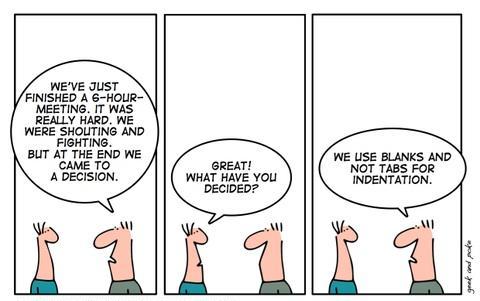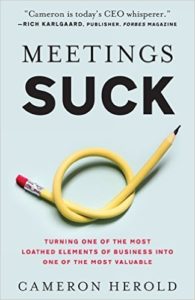One of the most important elements of a meeting comes at the very, very end—the meeting closer. A great meeting closer should leave your staff feeling motivated, prepared, and aware of what they must do next.
So, how do you approach this in your meeting closer?
Who, What, and When
Always close your staff meetings with this simple question: “Who’s doing what, and by when?”
Have each person in the meeting acknowledge what they’re committed to doing, and by when. This ensures that people don’t start projects based on items that were merely being discussed in the meeting. You also make it nearly impossible for people to leave the meeting without outlining their next steps.
Even if you’ve already covered the who, what, and when throughout the meeting, summarizing and repeating it makes your employees feel confident that they’re doing the right thing and heard you correctly. Repetition is key.
Knowing What’s Next
After you’ve closed the meeting itself, you need to make sure that you know if another meeting is necessary, and when, and if any other participants should’ve been present. The knowledge of if another meeting is necessary comes with knowing your employees and their work process, gauging the reactions of your employees through the meeting, and the extent of the task at hand.
The process can always be refined, and it’s important you remain open to that. Never close a meeting without everyone knowing their exact deliverables. Also, make sure your employees know if there will be a future follow-up meeting and what they need to get done before that.
“You can close the meeting by briefly sharing next steps. Consider reviewing the steps for each attendee or department, depending on the size of your meeting. You may also use this time to remind attendees when and where the next meeting will take place.” – Indeed
Acknowledging Achievements
During your meeting closer, don’t forget to thank your employees for coming, thank them for the new work they’ve been assigned, and acknowledge any of their achievements. A great meeting closer leaves employees feeling motivated and inspired. What better way of doing this than acknowledging that you, their leader, see them and care about the work they’re doing.
“The end of the meeting is also the time to thank anyone who has not been thanked at the beginning of the meeting or anyone who deserves a second thank you. Congratulations or Good-luck can also be offered here to someone who has experienced something new, such as receiving a promotion, getting married, or having a baby.” – English Club
Your meeting closer is just as important as everything else in your meeting, if not more. It might seem redundant and involve some repetition, but it all has its value. Meeting closers are key to having a motivated and productive team when it’s over, so make sure to always make time for a stellar closer!
What do you like to do in your meeting closers? Let us know in the comments below!
If you have questions or would like more information, I’d be happy to help. Please send an email, and my team will get in touch with you!
Editor’s Note: This post was originally published in November 2011 and has been edited for accuracy and comprehensiveness.







